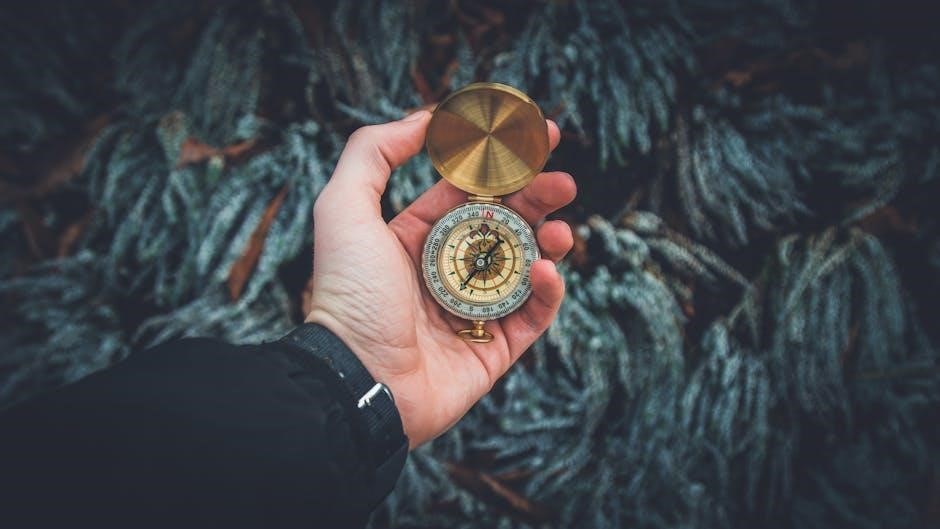Band Saw Guide Bearings: A Comprehensive Overview
Band saw guide bearings play a crucial role in ensuring accurate and smooth cuts. These bearings support the blade, minimizing vibration and preventing it from wandering during operation. Proper functioning guide bearings are essential for achieving clean cuts and maximizing blade life, improving efficiency.
Understanding Band Saw Guide Systems
Band saw guide systems are essential components that maintain blade stability during cutting operations. These systems typically consist of upper and lower guides, positioned above and below the work table, respectively. The primary function is to support the blade, preventing it from deflecting or wandering, which ensures accurate and clean cuts. Factory setups often use solid blocks, but precision guide assemblies offer a significant upgrade.
The guides incorporate bearings that minimize friction and provide smooth blade movement. The configuration of these bearings, including thrust and side bearings, directly impacts performance. Understanding the interplay between these components is crucial for optimizing band saw performance. Regular maintenance and timely replacement of worn bearings are vital for maintaining accuracy.
Upgrading to a high-quality guide system can dramatically improve cutting precision, especially when converting from traditional blocks to roller bearing guides; These systems enhance the overall efficiency and extend the lifespan of the band saw blade. Adjustments to the guide system are necessary to accommodate different blade widths and materials being cut.

Types of Band Saw Guide Bearings
Band saw guide bearings come in various types, each designed for specific functions within the guide system. Primarily, there are thrust bearings and side bearings. Thrust bearings support the blade from the rear, preventing backward movement during cutting. These bearings often have a flat side facing the blade and are essential for handling the force exerted during cutting operations.
Side bearings, typically roller bearings, support the sides of the blade, preventing lateral movement and ensuring straight cuts. These bearings can vary in size and material, depending on the band saw model and the intended application. High-quality side roller bearings are mounted on both the top and bottom guides.
Some band saws use a combination of ball bearings and roller bearings, while others may use blocks made of materials like carbide or ceramic. The choice of bearing type depends on factors such as blade width, cutting speed, and the materials being cut. Upgrading to sealed ball bearing roller guides can enhance precision and performance, offering smoother and more accurate cuts compared to traditional guide blocks.

Functions of Thrust Bearings
Thrust bearings in a band saw guide system primarily serve to support the rear of the blade, counteracting the force exerted during the cutting process. Their main function is to prevent the blade from deflecting backward, ensuring it maintains a consistent cutting path. Thrust bearings absorb the pressure, which is crucial for achieving precise and clean cuts.
These bearings are typically positioned directly behind the blade, providing a stable contact point. The design often features a flat side that faces the blade, maximizing the contact area and distributing the force evenly. This configuration helps to minimize friction and wear on the blade, extending its lifespan and maintaining cutting efficiency.
In addition to preventing backward deflection, thrust bearings also contribute to overall blade stability. By providing a solid support structure, they reduce vibration and minimize blade wandering, resulting in smoother and more accurate cuts, especially when working with thicker or harder materials.
Functions of Side Bearings
Side bearings in band saw guides are vital for maintaining blade stability and preventing lateral movement during cutting operations. Their primary function is to support the blade from the sides, ensuring it remains aligned and doesn’t deviate from the intended cutting path. This lateral support is essential for achieving accurate and clean cuts, especially when working with dense materials or intricate designs.
These bearings are typically positioned on either side of the blade, providing a stable and consistent contact point. By minimizing sideways deflection, side bearings reduce vibration and prevent the blade from wandering, resulting in smoother and more controlled cuts. They play a critical role in maintaining the blade’s rigidity and preventing it from twisting or bending under pressure.
Furthermore, side bearings help to distribute the cutting force evenly along the blade, reducing stress and wear. This contributes to extending the blade’s lifespan and maintaining its sharpness over time.
Common Band Saw Bearing Sizes
Band saw bearings are available in various sizes to accommodate different band saw models and blade dimensions. Identifying the correct bearing size is crucial for ensuring proper fit and optimal performance. One common size is the 6202 bearing, which typically measures 15mm in bore diameter, 35mm in outer diameter, and 11mm in width.
Another frequently encountered size is the 608 bearing, with dimensions of 8mm bore, 22mm outer diameter, and 7mm width. These bearings are often used in smaller band saws or for specific guide configurations.
Bearing sizes can also vary depending on whether they are used as side bearings or thrust bearings. Side bearings tend to have smaller diameters, while thrust bearings may be larger to handle axial loads effectively. It’s essential to consult the band saw manufacturer’s specifications or refer to a bearing size chart to determine the appropriate dimensions for your particular band saw model.
Shielded vs. Sealed Bearings
When selecting band saw guide bearings, a key decision involves choosing between shielded and sealed bearings. Both types offer protection against contaminants, but they differ in their construction and level of sealing. Shielded bearings feature metal shields that provide a non-contact barrier, deflecting larger particles while allowing some grease to escape.
Sealed bearings, on the other hand, incorporate rubber or synthetic seals that create a tighter, more complete closure. These seals prevent contaminants from entering the bearing and retain lubricant more effectively.
The choice between shielded and sealed bearings depends on the operating environment and application requirements. Shielded bearings are often preferred in cleaner environments where lower friction is desired. Sealed bearings are better suited for dusty or dirty conditions, where maximum protection against contamination is essential. While sealed bearings have slightly higher friction due to the seal contact, they offer superior longevity in demanding environments.
Signs of Worn Bearings
Recognizing the signs of worn band saw guide bearings is crucial for maintaining optimal performance and preventing damage to the blade and machine. One of the primary indicators of worn bearings is excessive vibration during operation. You might notice that the saw vibrates more than usual, especially when cutting thicker materials.
Another common sign is unusual noise, such as grinding, squealing, or rattling sounds emanating from the guide area. These noises often indicate that the bearings are damaged or lack sufficient lubrication.
Visible play or looseness in the bearings is another telltale sign. If you can wiggle the blade or bearing assembly by hand, it suggests that the bearings are worn and no longer providing adequate support.
Furthermore, check the bearings for visible damage, such as cracks, chips, or rust. Any of these signs indicate that the bearings need replacement. Ignoring these signs can lead to inaccurate cuts, blade breakage, and potential damage to the band saw.

Upgrading Band Saw Guides with Bearing Kits

Upgrading your band saw guides with bearing kits can significantly improve its performance and precision. These kits typically replace the factory guide assemblies, which often use solid blocks or basic bearings, with precision guide assemblies that incorporate high-quality bearings. The improvement will be drastic, and the blade will be loosely held by solid blocks.
A typical band saw guide conversion kit includes upper and lower guides, mounting brackets, studs, screws, and a guard adapter bracket. These kits are designed to provide better blade support, reduce friction, and minimize vibration, resulting in smoother, more accurate cuts.
When selecting a bearing kit, consider the type and quality of the bearings. Sealed ball bearing roller guides are a popular choice for enhanced precision and durability. Ensure that the kit is compatible with your specific band saw model, as compatibility requirements can vary. Upgrading to a bearing kit is a worthwhile investment for any serious woodworker.
Retrofit kits
Retrofit kits offer a convenient way to upgrade your band saw’s guide system without requiring extensive modifications. These kits are designed to replace existing guide components with improved bearings and support structures, enhancing the saw’s overall performance. A band saw guide conversion (retrofit) kit typically includes the upper and lower guides, upper and lower mounting brackets, studs, screws, and a guard adapter bracket, if needed;
Retrofit kits are particularly useful for older band saws or models with subpar factory guides. By installing a retrofit kit, you can achieve smoother cuts, reduced blade wear, and improved accuracy. Look for kits that use high-quality bearings and durable materials to ensure long-lasting performance. When selecting a kit, verify its compatibility with your band saw model and follow the installation instructions carefully.
Adjusting Band Saw Guide Bearings
Proper adjustment of band saw guide bearings is crucial for optimal performance and blade longevity. The goal is to provide adequate support to the blade without causing excessive friction or binding. Start by ensuring the bearings are clean and free of debris. Loosen the adjustment screws and position the side bearings so they lightly contact the blade, allowing it to run freely.
The thrust bearing should be positioned just behind the blade, providing support during cutting. Adjust the thrust bearing so it doesn’t apply excessive pressure, which can cause heat buildup and premature wear. Over-tightening the bearings can lead to blade damage and reduced cutting efficiency. Periodically check the bearing adjustments and make corrections as needed to maintain proper blade support. Regularly inspect the bearings for wear and replace them when necessary.
Troubleshooting Common Bearing Problems
Several issues can arise with band saw guide bearings, impacting performance. One common problem is excessive noise, often indicating worn or damaged bearings. Check for roughness or play in the bearings by rotating them manually. Replace any bearings that feel gritty or loose. Another issue is overheating, which can be caused by over-tightening the bearings or using incorrect lubrication; Ensure the bearings are properly lubricated with a suitable grease or oil.
Blade wander or poor cut quality can also be attributed to bearing problems. Check that the bearings are properly aligned and adjusted, providing adequate support to the blade. If the blade continues to wander, inspect the bearings for wear or damage. Also, check the condition of the blade itself. Addressing these issues promptly will help maintain the band saw’s cutting accuracy.